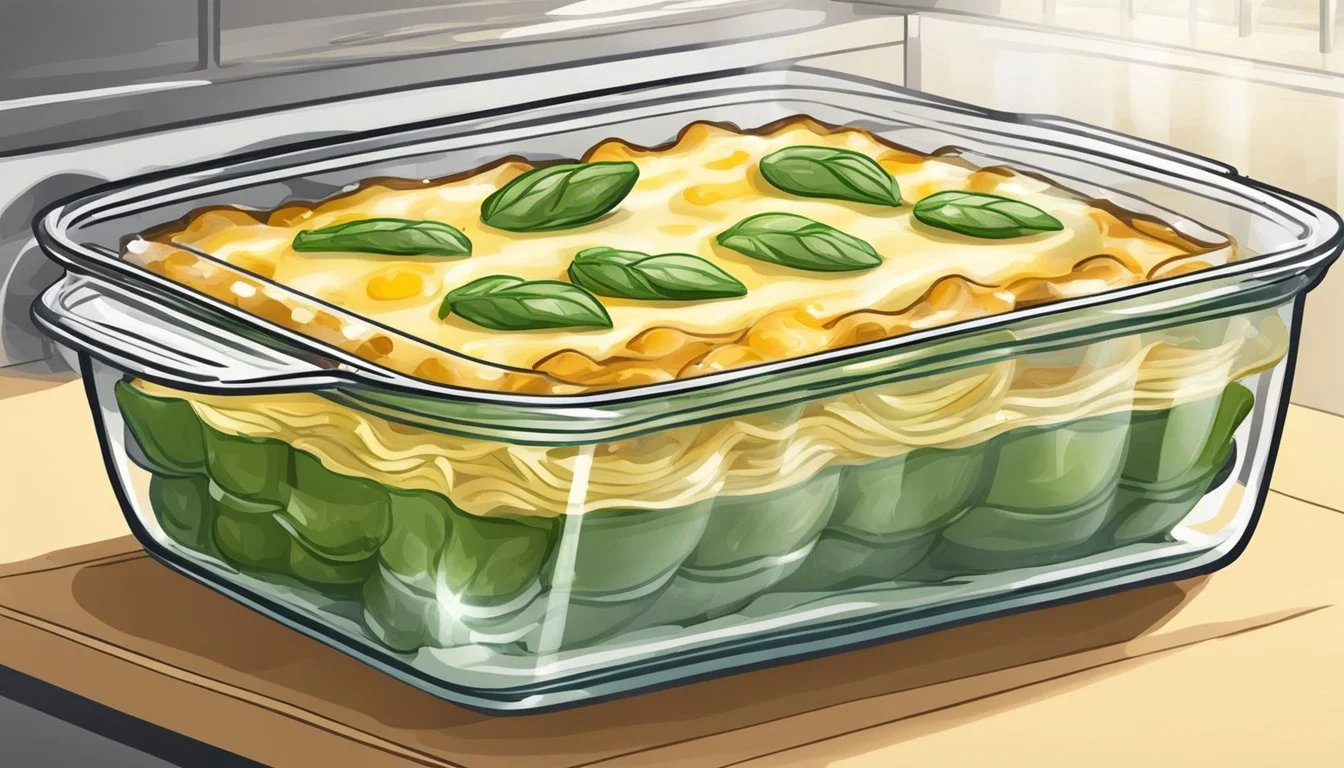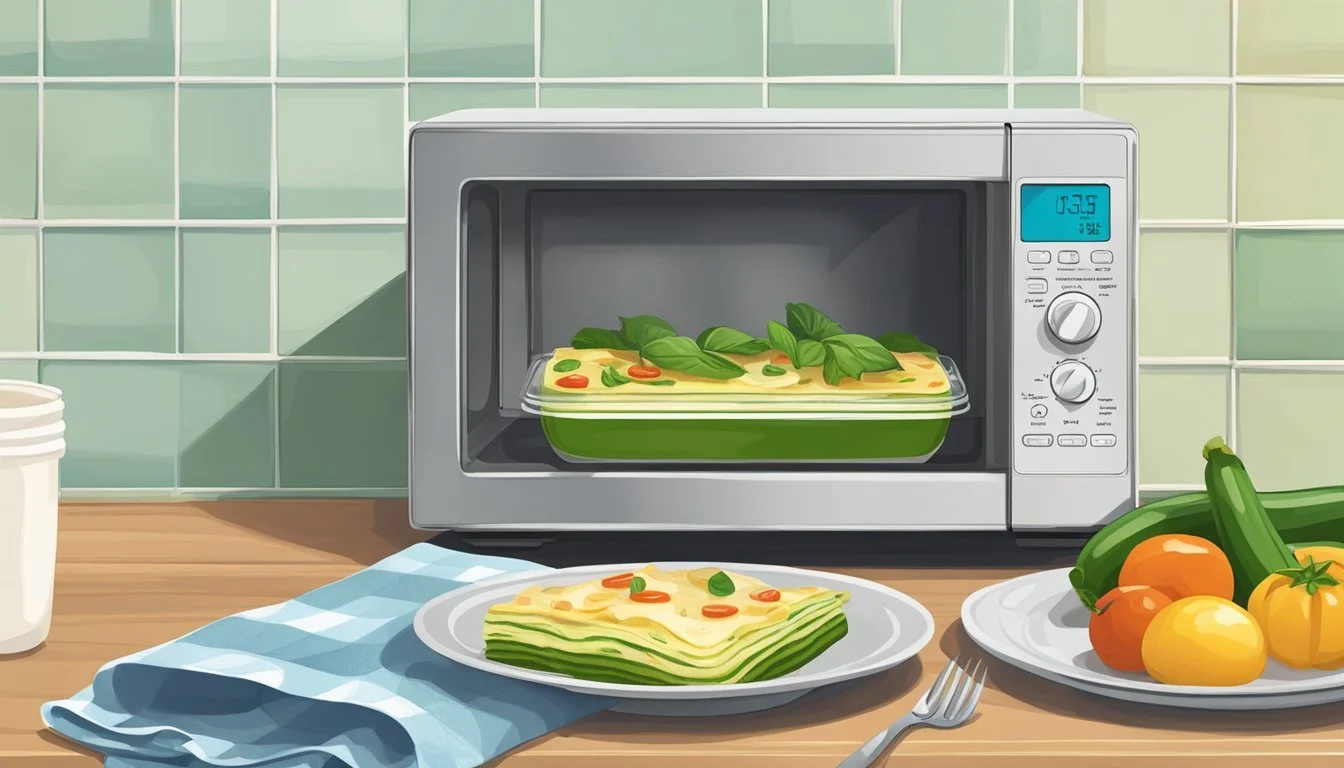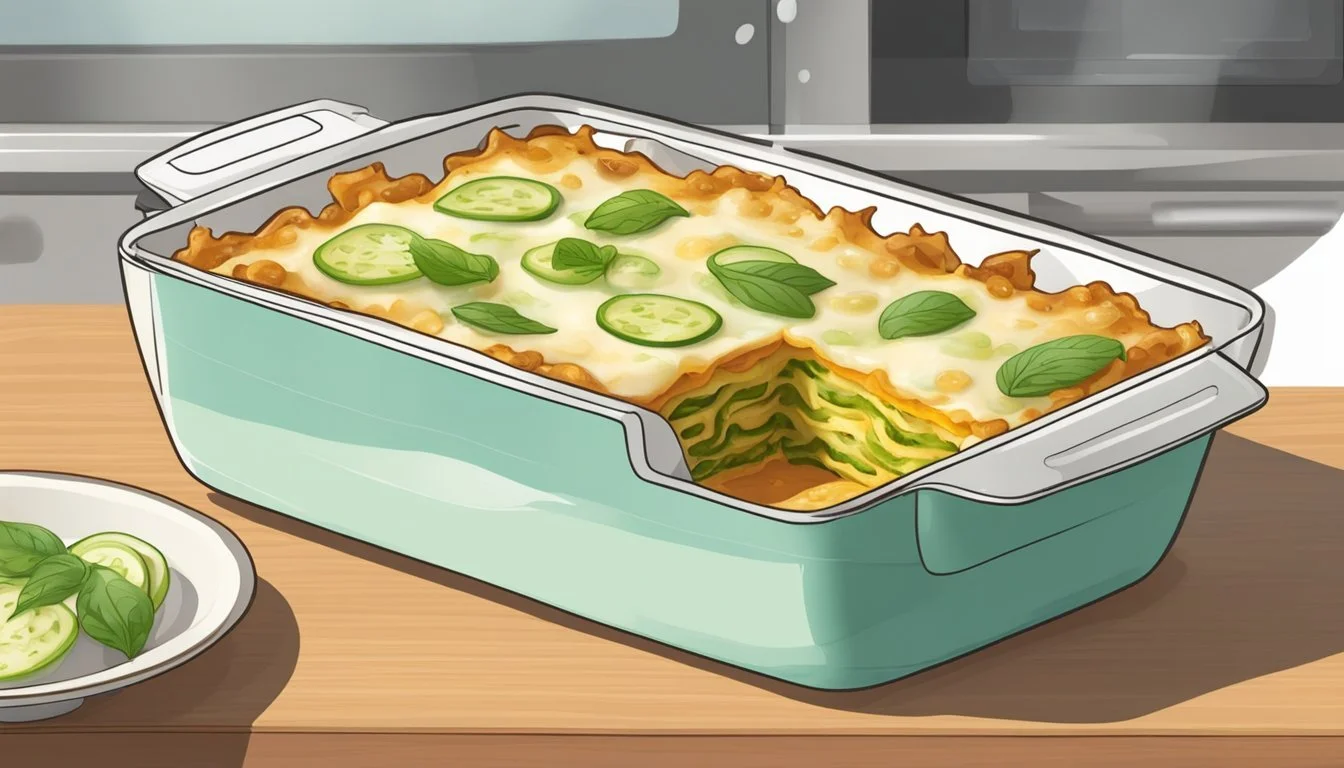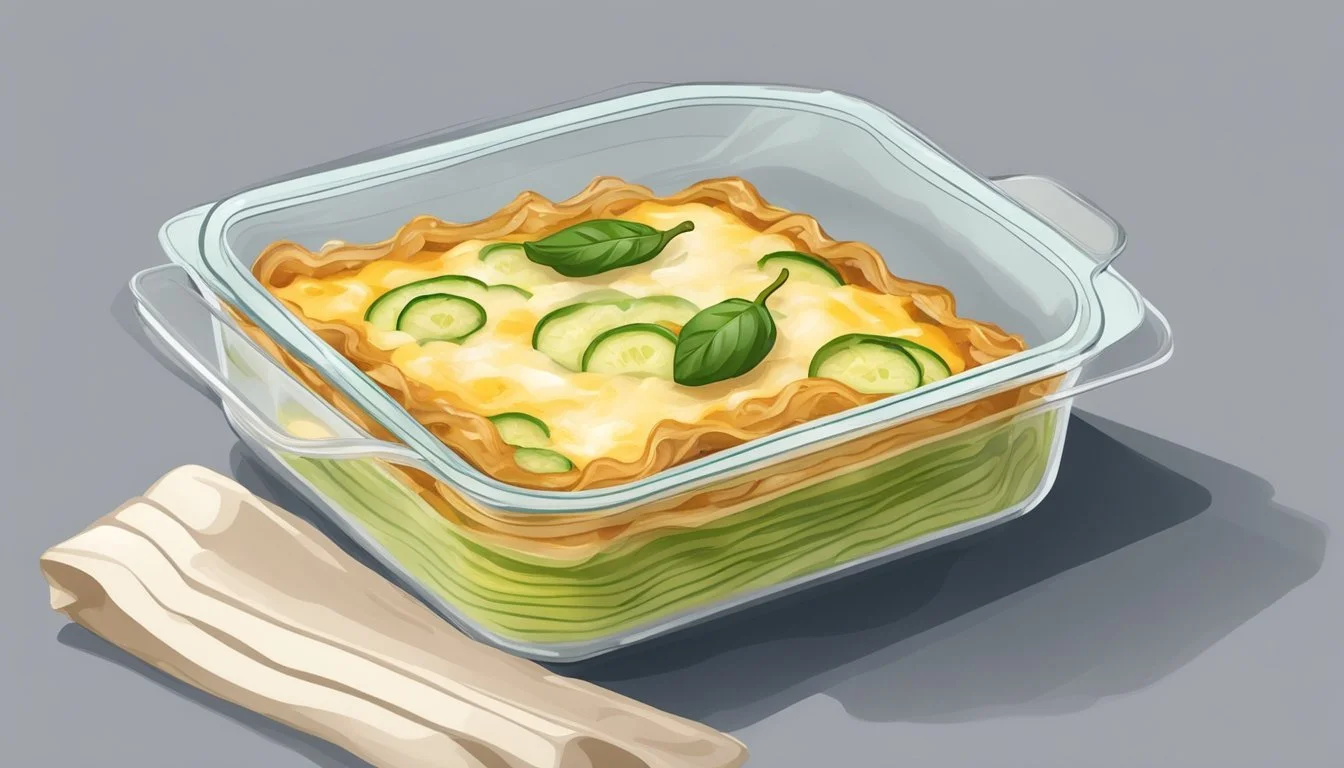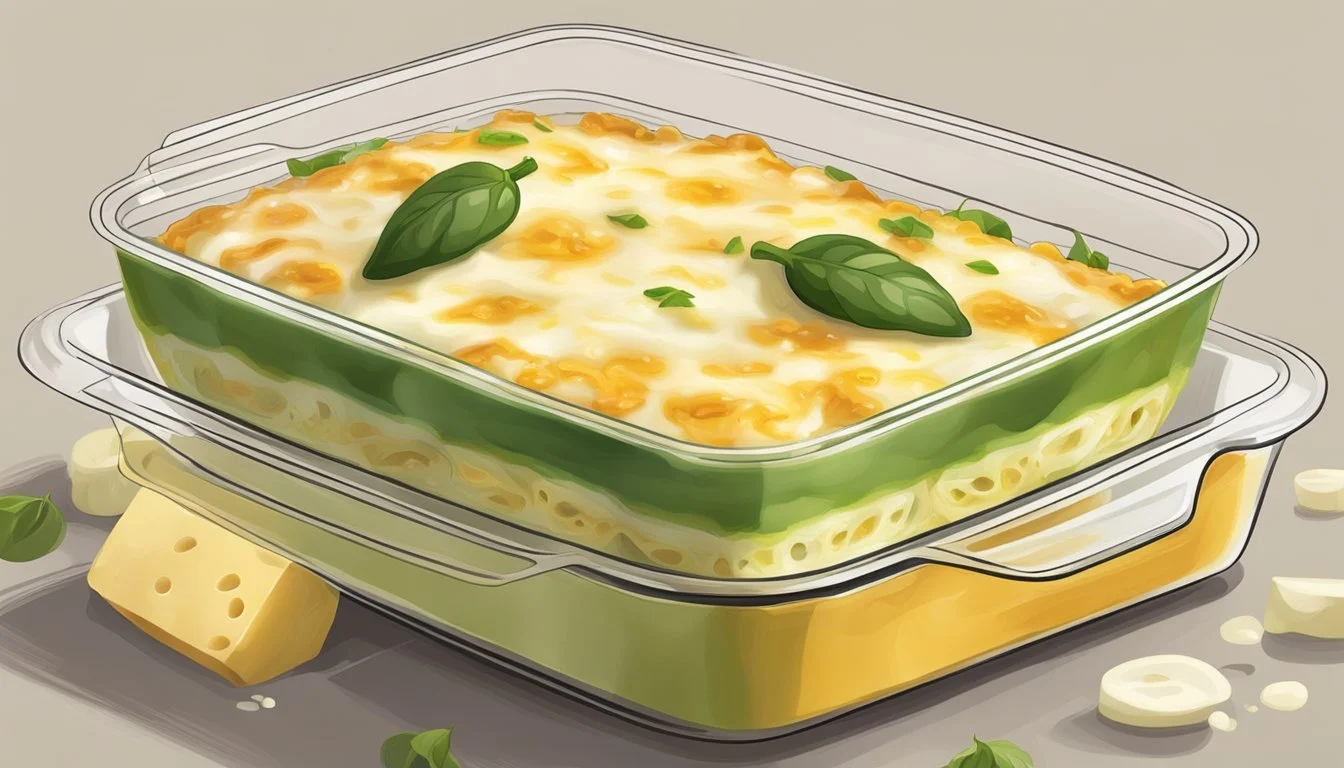Best Way to Reheat Zucchini Lasagna
Ensuring Tender Noodles and Perfectly Melted Cheese
Reheating zucchini lasagna can be as much of an art as making it. The challenge lies in maintaining the tenderness of the zucchini (What wine goes well with zucchini?) noodles while ensuring the cheese is perfectly melted, without drying out or becoming soggy. Striking the right balance in temperature and technique is key to reviving leftover zucchini lasagna that is as enjoyable as when it was first baked.
Certain methods stand out for delivering the best results. The oven method, which involves letting the lasagna sit at room temperature for a short period before baking, allows the dish to reheat evenly and the cheese to reach a desirable level of gooeyness. The air fryer, on the other hand, provides a quicker option that can mimic the oven's dry heat, crisping up the edges nicely without overcooking the delicate zucchini layers.
Store-bought or homemade, zucchini lasagna's unique qualities require careful handling when reheating to preserve its flavors and textures. Each method has its own set of steps that must be followed to achieve that perfect slice of lasagna, reminiscent of its first serving. The nuances of these reheating techniques are not only practical knowledge for lasagna enthusiasts but also enhance the overall experience of enjoying this beloved dish beyond its initial serving.
Overview of Zucchini Lasagna
Zucchini lasagna is a flavorful and healthier twist on the traditional Italian pasta dish. In this version, thinly sliced zucchini ribbons are used as a substitute for wheat noodles, making the dish not only gluten-free but also low-carb. This modification is particularly appealing for those adhering to a vegetarian lifestyle or anyone looking to reduce their carbohydrate intake.
The layers of zucchini provide a tender yet firm structure that holds together various cheeses, typically ricotta, mozzarella, and Parmesan. These cheeses are key to achieving the creamy and melted consistency that is characteristic of a good lasagna. The zucchini itself has a high water content, which must be handled properly to avoid a watery outcome.
Apart from its nutritional advantages, zucchini lasagna is versatile. It can be customized with different fillings, including vegetables, meat substitutes, or a hearty meat sauce for those who are not vegetarian. Its preparation follows the standard lasagna process of layering ingredients and baking until the cheese is bubbly and the top is golden brown.
While pasta is central to traditional lasagna, in zucchini lasagna, the focus shifts to the fresh, squash-based "noodles". These not only impart a unique flavor profile but also provide a texture reminiscent of the pasta version while being a more wholesome option.
In essence, zucchini lasagna is a modern take on a classic, combining the comfort of a rich, cheesy lasagna with the benefits of a vegetable-based meal.
Advantages Description Gluten-Free Ideal for those with gluten sensitivities. Low-Carb Zucchini slices offer a lower carbohydrate content than pasta. Vegetarian-Friendly Can be made without meat, suitable for vegetarian diets. Versatile Filling can be varied to include a range of vegetables or proteins. Nutritious Zucchini is a nutritious vegetable providing vitamins and fiber.
Necessary Kitchen Tools
When reheating zucchini lasagna, the right kitchen tools are crucial for maintaining the tender texture of the noodles and ensuring the cheese is perfectly melted. Two essential tools are a mandoline for evenly slicing zucchini and an appropriate baking dish for even heating.
Mandolin Use
A mandoline slicer ensures uniform thickness of zucchini slices, which is vital for consistent cooking and reheating. It's essential to use it with caution and follow these guidelines:
Always use the safety guard to protect fingers.
Adjust the blade to your desired thickness for precise slices.
Clean the mandoline carefully to keep it sharp and efficient.
Baking Dish Selection
The choice of a baking dish affects how the lasagna reheats. Ceramic or glass dishes are recommended for their heat retention properties and even cooking. Here are specifics to consider:
Size: A dish large enough to accommodate the lasagna without overcrowding.
Depth: A deep dish to hold layered zucchini without spillover.
Material: Glass or ceramic for optimal heat distribution.
Handles: Dishes with handles make it easier to remove from the oven.
Ingredients Breakdown
When reheating zucchini lasagna to maintain the tenderness of the noodles and the meltiness of the cheese, it's important to understand the roles different ingredients play. The following breakdown looks at cheeses, herbs, spices, vegetables, and meats to guide your selection for an optimal reheated dish.
Cheese Varieties
Cheese is pivotal not only for flavor but also for texture. Mozzarella cheese provides the stretch and meltiness desired in lasagna, while ricotta cheese offers creaminess, and Parmesan cheese imparts a savory umami taste. When reheating, these cheeses should retain their distinct characteristics:
Mozzarella: Used for its melting quality.
Ricotta: Adds creamy texture. Often combined with an egg to bind the layers.
Parmesan: Enhances the dish with a sharp, nutty flavor.
Herbs and Spices
Herbs and spices are used to accentuate the savory flavors of lasagna. Common choices include:
Basil: Fresh or dried, it contributes a sweet, peppery flavor.
Parsley: Offers a fresh, slightly bitter touch.
Salt and Pepper: Essential for seasoning, enhancing all other flavors.
Vegetable Choices
Vegetables add not only nutrition but also structure and moisture control.
Zucchini: Sliced thin, it often replaces noodles. It's salted and rested to remove excess water before assembly.
Garlic & Onion: Sautéed for foundational flavor.
Spinach: Adds color, iron, and when properly drained, does not make the dish watery.
Mushrooms & Eggplant: Optional for a hearty texture.
Meat and Meat Substitutes
The inclusion of meat is optional but common for added protein and savoriness.
Ground Beef: Provides a rich, traditional lasagna flavor.
Ground Turkey or Chicken: Leaner alternatives for those seeking a healthier option.
Preparing Your Lasagna for Reheating
Reheating zucchini lasagna requires careful preparation to ensure that the noodles remain tender and the cheese melty. The process begins before the lasagna even enters the oven or microwave, focusing on how the dish is stored and how it is readied for reheating.
Pre-Reheat Instructions
The successful reheating of zucchini lasagna begins with proper storage. One should wrap leftover lasagna tightly in aluminum foil or plastic wrap and store it in the refrigerator. This keeps the layers moist and protects the lasagna from absorbing other flavors. For optimal texture, it is advisable to let the lasagna come to room temperature for about 15 minutes before reheating; this helps the heat distribute more evenly.
Slicing and Portioning Tips
When one is ready to reheat the zucchini lasagna, they must consider portioning:
Individual Servings: If reheating single servings, it's best to cut the lasagna into desired portion sizes. This helps the lasagna heat evenly and reduces the reheating time.
Whole Pan: If planning to reheat an entire pan, check for any excess moisture that may have pooled at the bottom. Removing excess liquid helps prevent sogginess.
Utilizing these methods preserves the integrity of the lasagna noodles and maintains the layered structure, ensuring a more enjoyable reheating experience.
Reheating Methods
Reheating zucchini lasagna meticulously can preserve its tenderness and retain the ideal melted cheese texture. Whether using an oven or microwave, each method requires particular steps to ensure optimal results.
Oven Reheating
Preparation:
Preheat the oven to 375°F (190°C).
Steps:
Place the zucchini lasagna in an oven-safe dish if it's not already in one.
Optional: Drizzle a small amount of water over the top to maintain moisture.
Cover the dish with aluminum foil to prevent the cheese from burning and to keep the lasagna moist.
Bake for about 25 minutes. For larger portions, additional time might be necessary. Use a thermometer to ensure the internal temperature reaches 165°F (74°C).
Microwave Reheating
Preparation:
Transfer lasagna to a microwave-safe dish.
Steps:
Add a splash of water or cover with a damp paper towel to keep the lasagna moist.
Use a microwave cover or microwave-safe plastic wrap, leaving one corner open to vent.
Microwave on medium power for 1 minute and check. Heat in additional 30-second intervals if necessary until the internal temperature is 165°F (74°C) and the cheese is melted evenly.
Preventing Common Reheating Issues
When reheating zucchini lasagna, two primary concerns are preventing the dish from becoming soggy and ensuring the cheese retains its creamy goodness. Proper technique will address these issues, resulting in a satisfyingly warm and delicious meal.
Avoiding Sogginess
To prevent a watery lasagna, one can take a few precautionary steps:
Drain Excess Liquid: Before reheating, gently remove any accumulated liquid at the bottom of the dish. This can be done with careful tilting or by using a tool such as a turkey baster.
Reheat Slowly: In an oven, cover the lasagna and reheat it at 350 degrees F for 30-35 minutes. If reheating a single serving, a microwave-safe plate in the microwave can be used with the power set to a medium level to avoid overheating.
Ensuring Cheesy Goodness
To maintain the quality of the cheesy components:
Use Moderate Heat: Cheesy lasagna benefits from reheating at a medium temperature to prevent the cheese from separating or becoming oily. Covering the lasagna while it reheats helps to distribute heat evenly.
Finish Uncovered: If desired, one can remove the cover during the last 5 minutes of oven reheating, helping to crisp the cheese on top without compromising its creaminess.
Storing Lasagna for Optimal Freshness
To maintain the tenderness of the noodles and the integrity of the cheese, proper storage techniques for zucchini lasagna are crucial. These methods will ensure that when reheated, the lasagna will be as enjoyable as when first baked.
Refrigeration Best Practices
Temperature: Store lasagna in the refrigerator within two hours of cooking to prevent bacterial growth. The optimal temperature for storage is at or below 40°F.
Containers: Use an airtight container or wrap the lasagna tightly in plastic wrap or aluminum foil to protect it from absorbing odors and prevent moisture loss.
Shelf Life: Refrigerated lasagna will maintain its quality for about 3 to 5 days. After this period, the risk of spoilage increases, and the lasagna's texture and flavor may degrade.
Freezing and Thawing Procedures
Preparation for Freezing:
Cool the lasagna completely to avoid ice crystal formation.
Portion the lasagna before freezing, which allows for easier thawing and reheating of individual servings.
Wrapping:
Wrap portions in plastic wrap, then in foil, or use freezer-safe bags to minimize exposure to air.
Label the packages with the freezing date for easy reference.
Thawing:
Thaw lasagna in the refrigerator for several hours or overnight to ensure it remains at a safe temperature during the thawing process.
Freezer Life:
Properly stored, freezer-friendly lasagna can be kept for up to three months without significant loss in quality. After this time, the lasagna is still safe to eat but may not have the same texture or flavor.
Serving Suggestions and Accompaniments
When reheating zucchini lasagna, choosing the right side dishes and presentation methods enhances the dining experience, ensuring balanced flavors and a visually appealing meal.
Complementary Side Dishes
He/she considers pairing zucchini lasagna with side dishes that complement its rich and hearty nature. Here are some specific options:
Salad: A crisp green salad dressed with a vinaigrette provides a light and refreshing counterpoint to the lasagna. One might use ingredients such as arugula, romaine, or a spring mix, and dress it with a simple olive oil and vinegar dressing.
Garlic Bread: Toasted garlic bread offers a crunchy texture and aromatic flavor that pairs beautifully with the creamy cheese and tender noodles of the lasagna.
Roasted Vegetables: (What wine goes well with roasted vegetables?) They might opt for a variety of roasted vegetables like bell peppers, asparagus, or broccoli, seasoned with herbs and a drizzle of olive oil, to add a flavorful and nutritious side.
Garnish and Presentation Tips
Attention to detail in garnishing and presentation turns the reheated zucchini lasagna into a feast for the eyes.
Basil: A chef would consider garnishing with fresh basil leaves just before serving to add a burst of color and enhance the flavor profile with a hint of freshness.
Parsley: They might sprinkle chopped parsley over the top for a touch of green and a subtle herby note.
The chef understands that the right accompaniments and presentation elevate the overall dining experience, turning a simple reheated dish into an enjoyable meal.
Special Dietary Considerations
When reheating zucchini lasagna, it's essential to consider the dietary restrictions and preferences that might apply. Texture and taste are important, but so is ensuring that the dietary needs such as vegetarian, gluten-free, or vegan requirements are met. Here's how to reheat zucchini lasagna while keeping these considerations in mind.
Making Zucchini Lasagna Vegetarian
To maintain the integrity of a vegetarian zucchini lasagna, one should ensure that all cheeses, including ricotta, are rennet-free. Most store-bought cheese today is vegetarian-friendly, but it's always best to check the labels. Incorporating a variety of vegetables can also enhance the flavor and nutritional value of the lasagna.
Key Elements:
Rennet-free cheese
Variety of vegetables for flavor
Gluten-Free and Low-Carb Options
For gluten-free and low-carb diets, zucchini lasagna is naturally a great option since the traditional noodles are replaced with slices of zucchini. To ensure the lasagna remains gluten-free, any added sauces or fillings should also be free from gluten-containing ingredients.
Table: Gluten-Free Ingredients for Zucchini Lasagna
Gluten-Free Ingredient Common Gluten Containing Ingredient to Avoid Gluten-free marinara sauce Sauces with added flour or thickeners Ground meat or meat substitute Meat fillers or binders such as breadcrumbs Fresh herbs and spices Pre-packaged seasoning mixes
For those looking for a low-carb alternative, zucchini serves as a nutritious substitute to noodles and keeps the dish within their dietary goals.
Vegan Alternatives
A vegan zucchini lasagna requires the omission of all animal products, which include eggs and dairy cheese. Instead, one can use plant-based substitutes, like vegan cheese, and for the ricotta, a blend of tofu with nutritional yeast and herbs can offer a similar texture and flavor profile.
Key Vegan Substitutes:
Vegan cheese in place of traditional cheese
Tofu-herb blend as a ricotta cheese alternative
Conclusion
Reheating zucchini lasagna successfully preserves its comforting appeal, ensuring that the noodles remain tender and the cheese delightfully melted.
For the oven method, cooks should allow a whole pan to sit at room temperature for about 15 minutes before heating at 350°F. It's essential to cover the dish to prevent drying out. For single servings, a microwave is a suitable alternative. Place the lasagna on a microwave-safe plate, and heat until the cheese is bubbly and the noodles are warmed throughout.
When reheating, the following steps are recommended:
Whole Pan: Bake covered for 30-35 minutes.
Single Servings: Use a microwave, checking every 30 seconds to avoid overheating.
To maintain the dish's integrity, remove any excess water that may have settled at the bottom, as this could lead to sogginess.
Individuals who take pleasure in zucchini recipes cherish the lasagna's perfect blend of flavors and textures. Lasagna recipes, particularly those substituting zucchini for traditional noodles, present a healthier alternative that still satisfies the craving for cozy, cheese-laden dishes.
To conclude, adhering to these reheating techniques will ensure the enduring allure of this beloved dish, celebrating the fusion of hearty comfort food with the lighter touch of zucchini.

